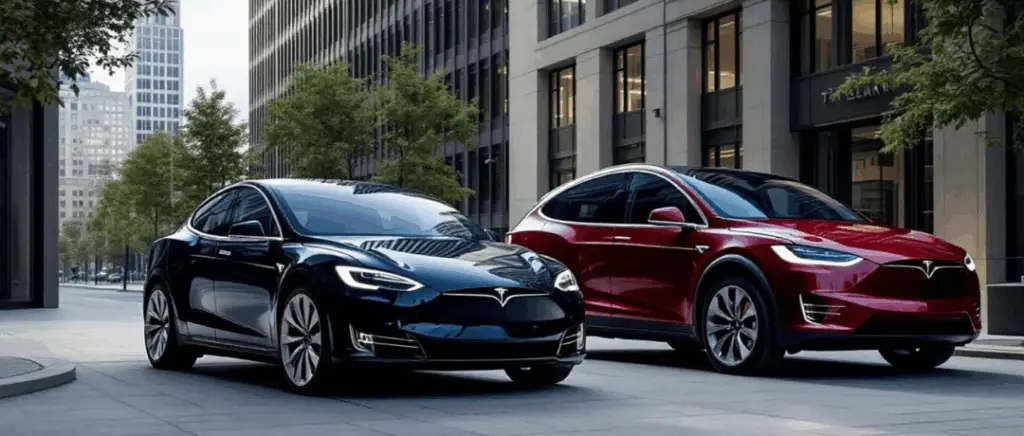Our experts answer your questions with a smile
Monday to Friday 9am - 12.30pm - 2pm - 7pm
What is the impact of the LOM law and the new tax regulations on companies?
Given the urgent need to tackle climate change and the saturation of the transport network, theLOM law (Mobility Orientation Law)on 24 December 2019 aims to improve everyday transport to be :
- Less expensive.
- More environmentally friendly.
- It's simpler.
LaLOM Actis based on three main pillars:
- Investing more in everyday transport.
- Deploy new solutions (car-sharing, mobility vouchers, etc.).
- Committing to an ecological transition through cleaner mobility (conversion bonus, increasing the number of recharging points for electric vehicles, banning the sale of carbon-based fossil fuel cars, etc.).by 2040...).
However, companies must also contribute to the challenges of sustainable development. By implementing aCSR approachAs part of their Corporate Social Responsibility (CSR) strategy, companies are taking action to have a positive impact on the environment and on well-being in the workplace.
Three measures stemming from the new regulations in the lawLOMimpact companies:
The employer mobility plan
Since 1 January 2020, companies with more than 50 employees on a single site have been obliged to include a mobility section in their annual mobility plans.NAO (Compulsory Annual Salary Negotiations)with the social partners.
The benefits are environmental (limiting CO2 emissions), economic (optimising travel) and social (improving the quality of life at work for employees).
The company must apply aPDME (Employer Mobility Plan)if these negotiations are not concluded.
Greening the fleet
The aim is to acquire a percentage of low-emission vehicles. This applies to companies with a vehicle fleet (more than 100 light vehicles).
Companies will benefit from a number of advantages:
- a tax exemption on the use of passenger cars for economic purposes on their electric vehicle fleet
- an ecological bonus for the purchase of a new car with low CO2 emissions.
Sustainable mobility package
The employer covers the cost of transport. The aim is to move towards more ecological and economical mobility. The introduction of this package is optional. Capped at 500 euros per yearIt is dedicated to commuting costs.
To go further → Car fleet insurance
What financial support is available for an electric vehicle fleet?
Companies with an electric car fleet can benefit from financial aid.
Ecological bonus
Le environmental bonus is financial assistance for the purchase or lease of an electric or hybrid car. It is deducted from the price of the vehicle at the time of purchase, or reimbursed after the vehicle has been purchased. The amount of the bonus varies according to a number of factors.
For fleets, the bonus will be 4,000 for new vehicles costing less than €45,000. For the rechargeable hybrids under €50,000 and whoseautonomy is more than 50 kilometres, the amount will be €10,000.
Conversion premium
The good news is that it's not just private individuals who can benefit from the conversion premium. Businesses are also eligible. The conversion premium enables companies that scrap a vehicle to benefit from a substantial reduction on the purchase of the next vehicle.
The amount varies according to various criteria:
- vehicle purchase date The conditions are different if the vehicle was purchased before or after 26 July 2021.
- vehicle category
- CO2 levels
Advenir Bonus
If you wish to make a installing recharging points in your fleetyou can benefit from grant from Advenir.
Le Advenir programme helps to cover some of the costs associated with the bollard installation project.
Here, ADVENIR offers bonuses for :
- HGV fleets (less than or greater than 500 kVA)
- Fleets and employees of short-term hire companies
- Automotive service professionals
Here are the subsidy rates if you want to install charging stations on your car park depending on the target.
The ADVENIR bonus for heavy goods vehicle fleets (for deployment ofrecharging infrastructure less than 500 kVA)
| Type de bénéficiaire | Puissance de recharge | Taux d'aide | Montant maximal HT par point de recharge |
|---|---|---|---|
|
Company and public entity: private car park
|
between 12 and 43 kW AC
|
50 %
|
2 200 €
|
|
Company and public entity: private car park
|
between 20 and 40 kW DC
|
50 %
|
3 300 €
|
|
Company and public entity: private car park
|
Between 41 and 140 kW DC
|
50 %
|
7 500 €
|
|
Company and public entity: private car park
|
More than 140 kW DC
|
50 %
|
15 000 €
|
The ADVENIR bonus for HGV fleets (for the deployment of charging infrastructure above 500 kVA)
| Supérieur ou égal à 500 kVA | Supérieur ou égal à 1 000 kVA | Supérieur ou égal à 2 000 kVA | Supérieur ou égal à 4 000 kVA | Supérieur ou égal à 8 000 kVA |
|---|---|---|---|---|
|
100,000 EXCLUDING VAT
|
160,000 EXCLUDING VAT
|
240,000 EXCLUDING VAT
|
480,000 EXCLUDING VAT
|
960,000 EXCLUDING VAT
|
The ADVENIR bonus for company fleets and employees of short-term rental vehicles
The ADVENIR programme also offers a bonus to help short-term vehicle hire companies finance the purchase of new vehicles.installation of recharging stations.
Here is some information about the amount of the premium:
| Cible | Usage | Taux d'aide | Montant de la prime par point de recharge (HT) |
|---|---|---|---|
|
Short-term vehicle hire companies
|
Fleets and employees
|
20 %
|
600 EXCLUDING VAT
|
The ADVENIR bonus for automotive service professionals
And what about automotive service professionals?
After announcing the 3 May 2022 the renewal of Advenir until the end of 2025At the same time, the ADVENIR programme and the employers' organisation Mobilians decided to open an ADVENIR subsidy dedicated to automotive service professionals.
Here is the amount of aid available to them:
| Cible | Type de prime | Taux d'aide | Montant de la prime par point de recharge (HT) |
|---|---|---|---|
|
Automotive services profession
|
Fleet and employee charging points
|
25 %
|
750 EXCLUDING VAT
|
IMPORTANT:
- Premiums dedicated to fleets and employees and modernisation have been removed from the ADVENIR programme. since 31 December 2022,
- Incentives for recharging points open to the general public in private car parks and for intermediate targets (hotels, restaurants and shops), will end in August 2023.
What tax exemptions are there for a fleet of electric cars?
Aelectric vehicle fleetallows us to move towards an ecological transition. However, thetaxation of electric vehiclesis also a real economic advantage for your company. Here are the tax deductions you can benefit from:
Exemption from tax on the use of passenger vehicles for economic purposes
The Tax on the Use of Passenger Vehicles for Economic Purposes is an amount that companies must pay on the vehicles they own. Visitleasing for company vehiclesis also exempt from this tax.
Since 2021, the General Tax Code has drawn up a list of vehicles exempt from the tax on the use of private cars for business purposes. A fleet of electric cars is exempt from this tax.
Exemption from regional tax
The vehicle registration document (carte grise or certificat d'immatriculation) is subject to the payment of a tax: the regional tax.
Also known as tax on fiscal horsepower, it is calculated according to the vehicle's fiscal horsepower.
Since 2020, in France, companies with an electric car fleet have been exempt from regional tax.
Deduction of vehicle depreciation
L'depreciation of an electric vehicle is capped at €30,000regardless of the year of purchase. An electric car fleet represents a real tax advantage, because the depreciation of a thermal vehicle is capped at €18,300 for the least polluting cars.
The government offers attractive tax breaks to companies that opt for green mobility. Get your employees to switch to electric cars and reduce the cost of your electric car fleet.
To go further →taxation of electric vehicles
































